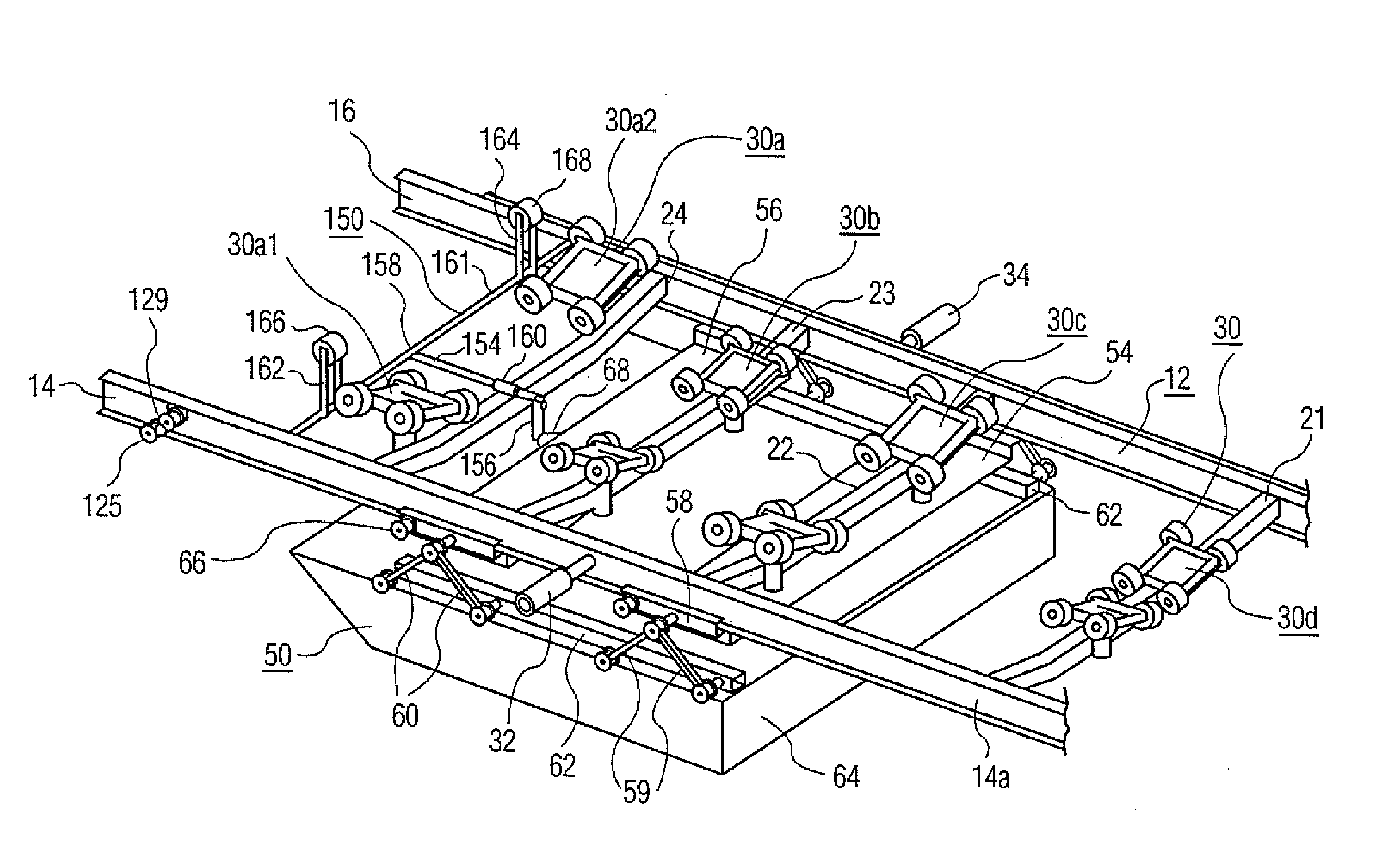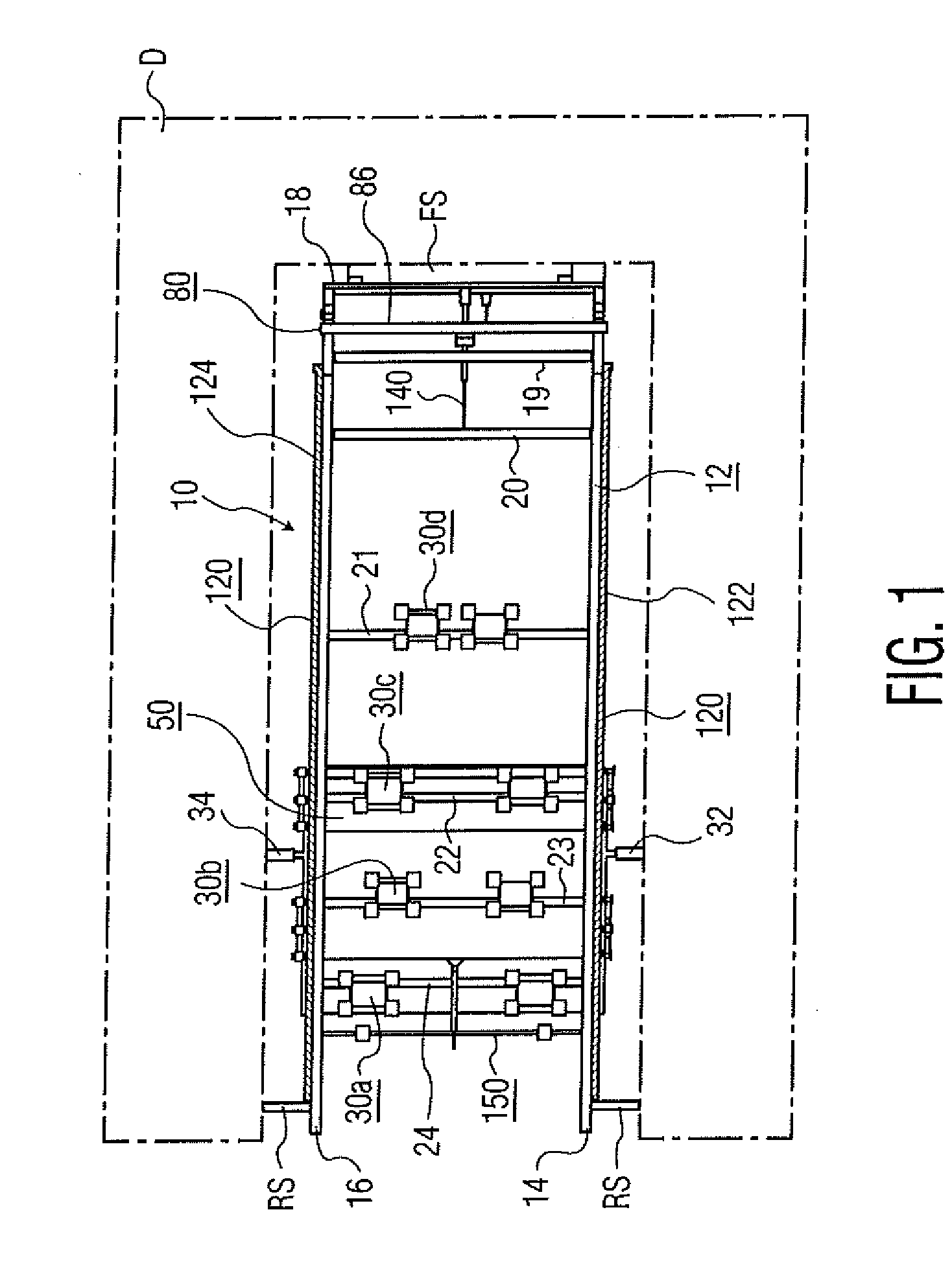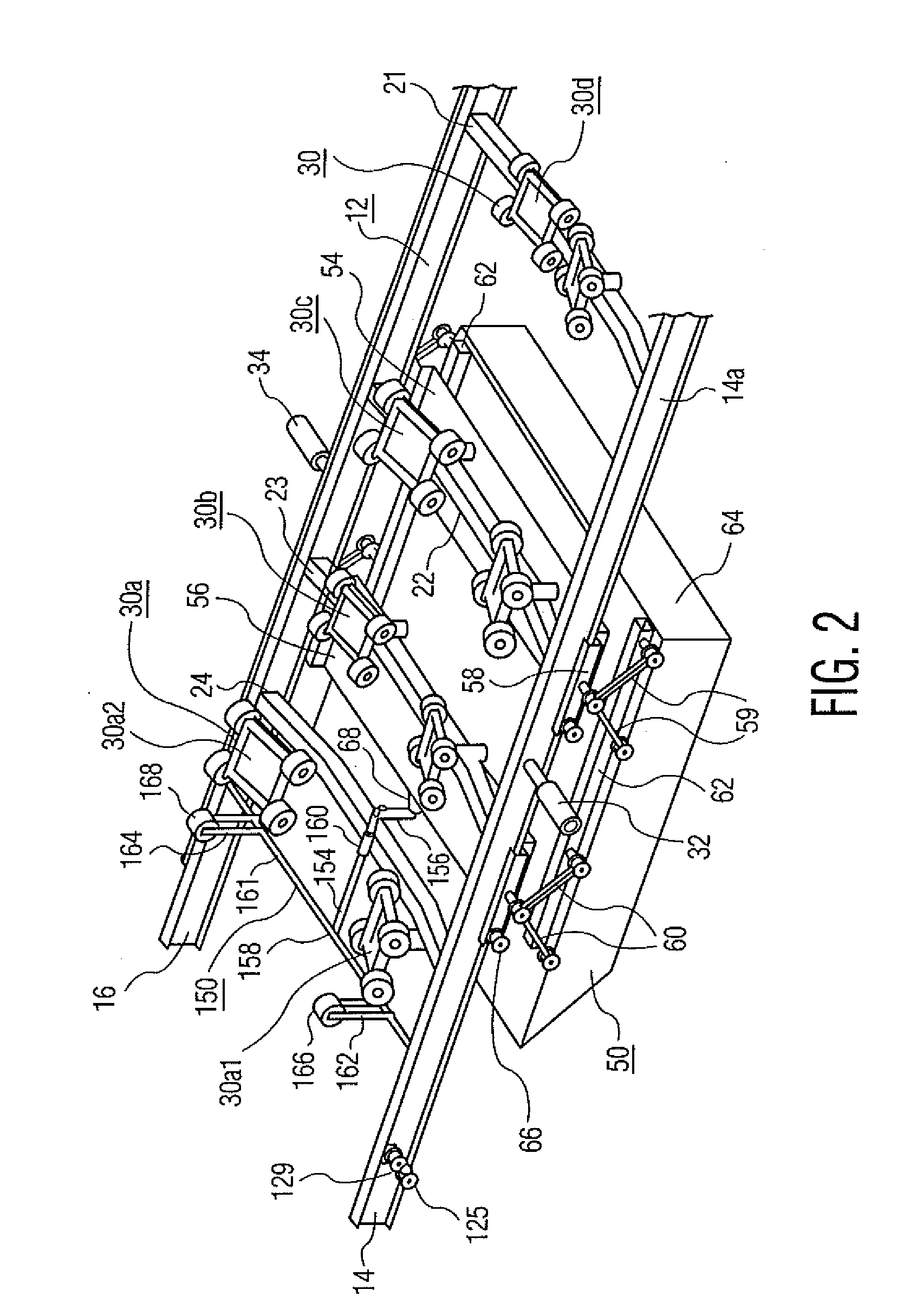Boat lift operated by boat's propulsive force
a technology of propulsive force and boat, which is applied in the field of boat lift, can solve the problems of large time and money spent by owners, pits and other surface imperfections in common hull materials like fiberglass and wood, and the maintenance of a boat hull left in water can require significant time and money
- Summary
- Abstract
- Description
- Claims
- Application Information
AI Technical Summary
Benefits of technology
Problems solved by technology
Method used
Image
Examples
Embodiment Construction
[0032]Referring to FIGS. 1 and 2, a boat lift 10 in accordance with a first embodiment of the present invention includes a lift frame 12 that has two generally parallel side rails 14 and 16 connected by cross braces 18, 19, 20, 21, 22, 23 and 24. The number and placement of the cross members is optional, their purpose being to provide sufficient rigidity to the frame 12 to accomplish the purposes of the boat lift in accordance with this description. The frame 12, with side rails 14 and 16 and cross braces 18 to 24, will typically be a unitary, welded structure, but those skilled in the art will appreciate that the frame can be fabricated in other ways as well. The frame 12 also includes a boat cradle 30 that comprises a plurality of roller assemblies 30a, 30b, 30c and 30d. Taking as representative the roller assembly 30a, it includes two roller dollies 30a1 and 30a2, each of which is supported on the frame cross brace 24. In the depicted embodiment, each roller dolly includes four h...
PUM
 Login to View More
Login to View More Abstract
Description
Claims
Application Information
 Login to View More
Login to View More - R&D Engineer
- R&D Manager
- IP Professional
- Industry Leading Data Capabilities
- Powerful AI technology
- Patent DNA Extraction
Browse by: Latest US Patents, China's latest patents, Technical Efficacy Thesaurus, Application Domain, Technology Topic, Popular Technical Reports.
© 2024 PatSnap. All rights reserved.Legal|Privacy policy|Modern Slavery Act Transparency Statement|Sitemap|About US| Contact US: help@patsnap.com










